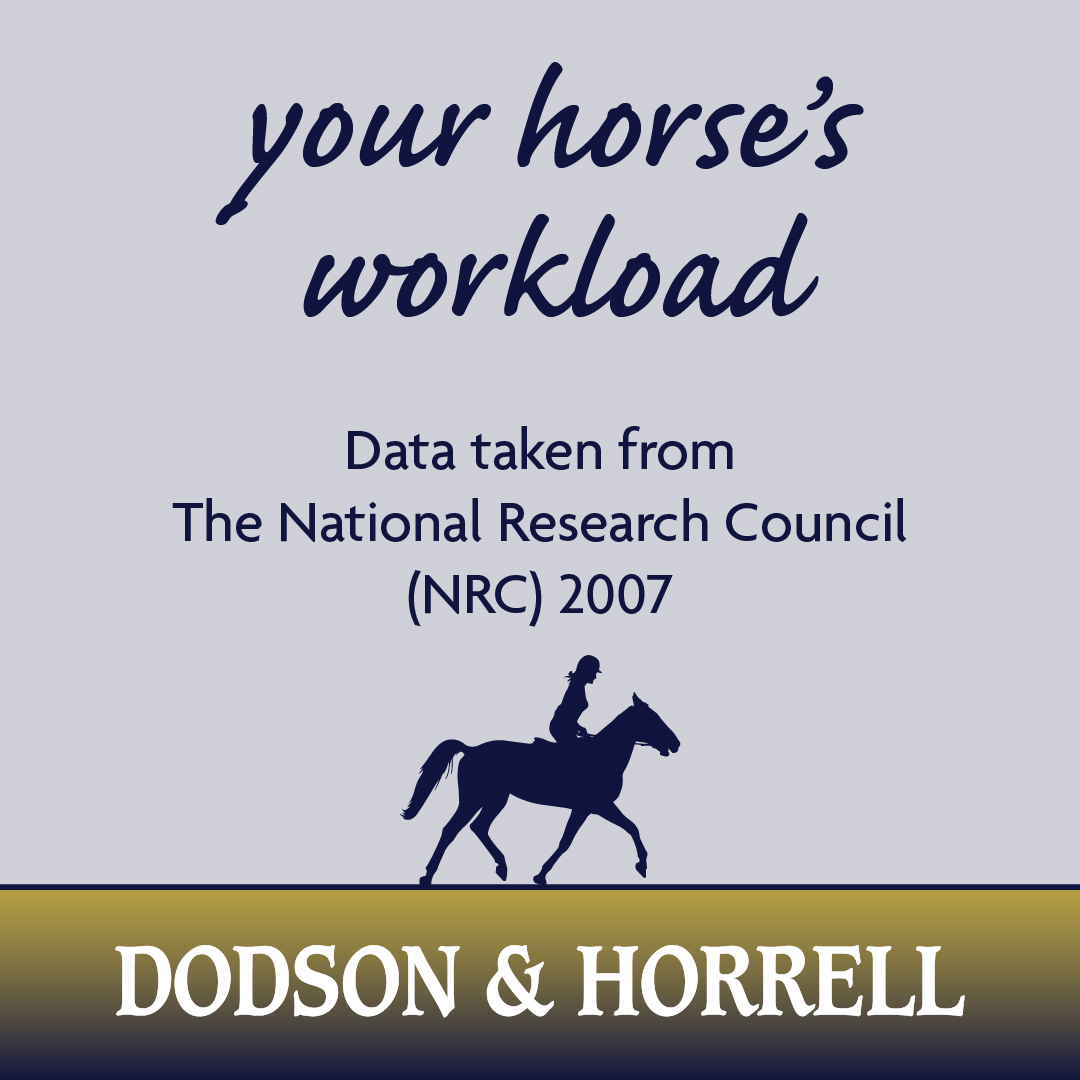Your horses’ requirement for certain nutrients and in particular antioxidants, quality protein and calories, increases as workload increases. However, it can be difficult to assess which level of work your horse is currently in and what their current feed requirements are. The below is a helpful guide that gives descriptions for estimating work level.
- Light work = One to three hours throughout the week of work composed of 40% walking, 50% trotting, and 10% cantering.
- Moderate work = Three to five hours throughout the week composed of 30% walking, 55% trot, 10% canter, and 5%
- Heavy work = Gallop training. Four to five hours work throughout the week composed of 20% walking, 50% trotting, 15% cantering, and 15% galloping or jumping
- Very heavy work = (Thoroughbred racehorses, longer distance endurance horses and top levels of eventing). Various work durations and speeds
*National Research Council (NRC)
Feed companies use these average workloads to provide categories as a feed guide, for example:
- Leisure Feeds are formulated to meet the requirements of horses in light to lower end of moderate work
- Performance Feeds are formulated for requirements of moderate work and above. Performance feeds provide more megajoules of energy to replace the energy that is expended during work, as well as additional vitamins and minerals to fulfil the extra demand for nutrients.
In addition to these subcategories,
- Racing Feeds are particularly specialised for the specific training requirements of very hard work and recovery in racehorses.
Defining workload as light, moderate and hard is a simplification that’s useful, particularly for leisure riders and those competing at grass roots level. How hard the body is working however is also influenced by many other factors including temperament, current fitness, age, health status, temperature etc. To better include all these factors, professional riders may decide to use heart rate as a more accurate indicator of how hard or efficiently the horse’s body is working. Utilising heart rate as an indicator of workload can help guide further choices about a horses diet. The heart rate of a normal healthy horse at rest, is 36-42 beats per minute and it increases during work to the following levels:
| During Light Work | 80 beats per minute (bpm) |
| During Moderate Work | 90 bpm |
| During Heavy Work | 110 bpm |
| During Very Heavy Work | 110-150 bpm |
* Nutrient Requirements for horses (NRC) 2007
To see how diet and in particular energy requirements vary with work level, it is interesting to note that energy requirements for a horse in:
- light work can increase by 25% above maintenance
- moderate work can increase by 50% above maintenance
- hard work can increase by 75% above maintenance,
- very hard work can increase by 100% above maintenance
Heart rate observations are useful because it helps to explain why we sometimes need to feed two similar horses in similar work differently. For example, if each horse had a different level of base fitness, one could be working harder than the other even when doing the same activity, which can influence actual energy expenditure as the heart rate is affected.
To help learn how to further define your horse’s workload and create or check their diet plan, consider working with your vet or contact our D&H Nutritional Helpline team, who will go over all influencing factors to help guide you to the most suitable type of feed for your horse as an individual.


